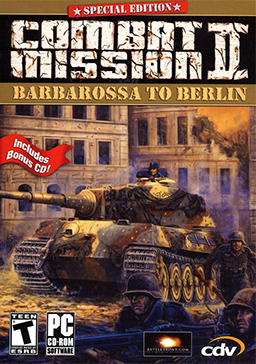
Combat Mission II: Barbarossa to Berlin is a 2002 computer wargame developed and published by Battlefront.com. A turn-based computer game about tactical battles in World War II, it is the sequel to Combat Mission: Beyond Overlord. The game has been described as the "reigning champ of east front tactical warfare for the PC."

A man-to-man wargame is a wargame in which units generally represent single individuals or weapons systems, and are rated not only on weaponry but may also be rated on such facets as morale, perception, skill-at-arms, etc. The game is designed so that a knowledge of military tactics, especially at the small unit or squad level, will facilitate successful gameplay. Man-to-man wargames offer an extreme challenge to the designer, as fewer variables or characteristics inherent in the units being simulated are directly quantifiable. Modern commercial board wargaming stayed away from man-to-man subjects for many years, though once the initial attempts were made to address the subject, it has evolved into a popular topic among wargamers.
Turn-based tactics (TBT) is a video game genre of strategy video games. They are turn-based simulations of operational warfare and military tactics in generally small-scale confrontations as opposed to more strategic considerations of turn-based strategy (TBS) games. Turn-based tactical gameplay is characterized by the expectation of players to complete their tasks using only the combat forces provided to them in a generally realistic manner.

Achtung Spitfire! is a 1997 computer wargame developed by Big Time Software and published by Avalon Hill. It is a turn-based air combat game taking place during the early half of World War II, including fixed-wing aircraft, air battles and operations by Luftwaffe, Royal Air Force and French Air Force in 1939–1943.
Atomic Games, Inc. was an American video game developer based in Austin, Texas, specializing in wargames. The company was founded by Keith Zabalaoui in 1989, and is best known for developing the Close Combat series of real-time wargames, as well as the V for Victory series. In December 2000, due to the cancellation of a project titled Hammer's Slammers, Atomic Games laid off its entire staff, only keeping three executives. Atomic Games was acquired by Destineer on May 6, 2005, while collaborating on Close Combat: Red Phoenix and Close Combat: First to Fight. Atomic Games was developing a third-person shooter, Six Days in Fallujah, in cooperation with Konami, until the latter decided to withdraw from the project in August 2009, causing significant layoffs at Atomic Games. The company went on to finish the game, but never released it. Atomic Games released the game called Breach, which is a multiplayer-only downloadable first-person shooter. Destineer also owned Bold Games, and MacSoft, who also went down with Destineer

Close Combat: A Bridge Too Far, or Close Combat II, is a World War II real-time computer wargame, developed by Atomic Games, and released on October 13, 1997. The second installment of the Close Combat series, the game is played on a two-dimensional map, between two players.
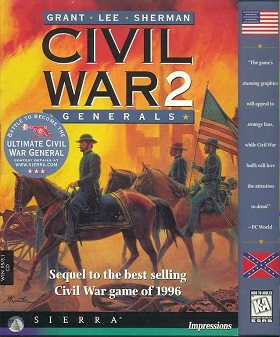
Grant, Lee, Sherman: Civil War Generals 2 is a computer game published by Sierra On-Line in 1997. It is the sequel to Robert E. Lee: Civil War General.

Close Combat is a 1996 real-time computer wargame developed by Atomic Games and published by Microsoft. Set during World War II, it simulates the conflict between the United States' 29th Infantry Division and Germany's 352nd Infantry Division after the Invasion of Normandy. The player controls an artificially intelligent army whose behavior is dictated by psychological models: each soldier makes decisions based on the circumstances of the battlefield and can disobey the player's orders.
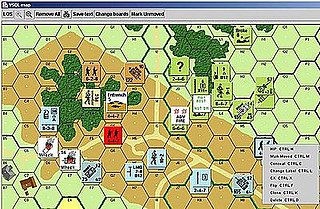
A computer wargame is a wargame played on a digital device. Descended from board wargaming, it simulates military conflict at the tactical, operational or strategic level. Computer wargames are both sold commercially for recreational use and, in some cases, used for military purposes.

Avalon Hill's Squad Leader is a 2000 turn-based strategy video game developed by Random Games and published by Hasbro Interactive under the MicroProse label. It is a tie-in to Avalon Hill's board wargame Squad Leader.
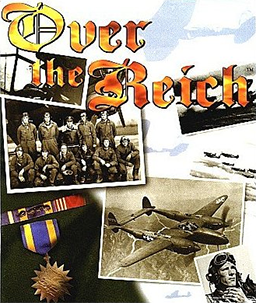
Over the Reich is a 1996 computer wargame for personal computers operating the Microsoft Windows operating system. The game was released in North America and Europe. A prequel, Achtung Spitfire!, was released in 1997.
Battlefront.com is a video game developer and publisher. Battlefront specialises in war-related games, including turn-based and real-time strategies, as well as simulations of air, land and naval military vehicles.

Combat Mission is the name of a series of computer wargames simulating tactical battles. The series has progressed through two distinct game engines. The original game engine, referred to as 'CMx1' by the developer, Battlefront.com, powered a trio of games set in the Second World War. Combat Mission: Shock Force was released in July 2007 as the debut of the 'CMx2' game engine. The Combat Mission games are a mixture of turn-based gameplay and simultaneous real-time execution. The game environment is fully three-dimensional, with a "Wego" style of play wherein each player enters their orders into the computer simultaneously during pauses in the action, and then are powerless to intervene during the action phase. More familiar turn-based games use an "I-go/You-go" system of play.

12 O'Clock High: Bombing the Reich is a 1999 computer wargame developed and published by TalonSoft. Designed by Gary Grigsby and Keith Brors, it is follow-up to Battle of Britain and a spiritual sequel to the 1985 wargame U.S.A.A.F. - United States Army Air Force.

The Great Battles of Alexander is a 1997 turn-based computer wargame developed by Erudite Software and published by Interactive Magic. Adapted from the GMT Games physical wargame of the same name, it depicts 10 of Alexander the Great's key conflicts, and simulates the interplay between Ancient Macedonian battle tactics and its rival military doctrines. Gameplay occurs at the tactical level: players direct predetermined armies on discrete battlefields, in a manner that one commentator compared to chess.

D-Day: America Invades is a 1995 computer wargame developed by Atomic Games and published by Avalon Hill for IBM PC compatibles. It is the third game in the World at War series, following Operation Crusader and World at War: Stalingrad.

Operation Crusader is a 1994 computer wargame developed by Atomic Games and published by Avalon Hill.
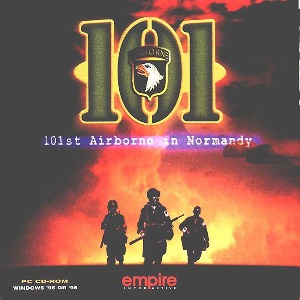
101: The Airborne Invasion of Normandy is a 1998 computer wargame developed by Interactive Simulations and published by Empire Interactive. Key members of the team had previously worked at Random Games, developer of Soldiers at War and Wages of War.
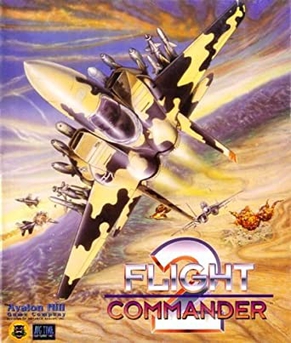
Flight Commander 2 is a 1994 computer wargame developed by Big Time Software and published by Avalon Hill. It was designed by Charles Moylan.

















